SOURCE: AFI
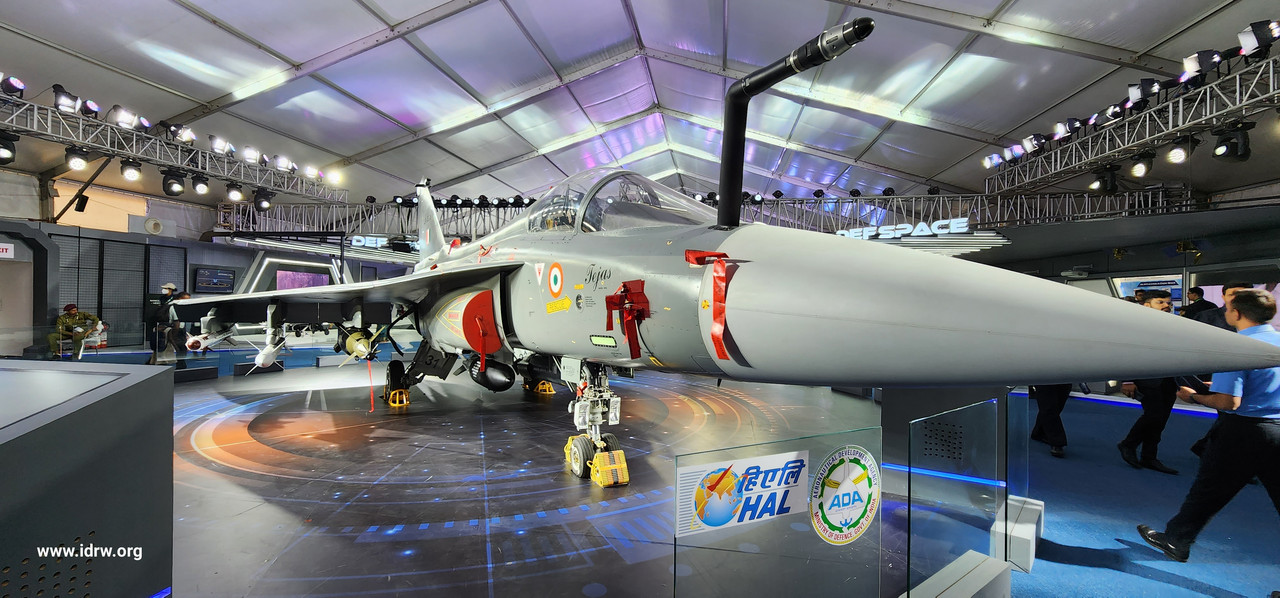
A 2004 article from Flight International, a renowned aerospace magazine, has resurfaced online, sparking a wave of interest. Authored by Veena Singh, the piece titled (original title can be inserted here) details discussions between China and India regarding collaboration on the Light Combat Aircraft (LCA) Tejas program.
The article reveals that in late July 2004, a high-level Chinese delegation, led by Aviation Industries of China vice-president Zhang Yang-Chong, visited India to explore joint development of the LCA. This news comes as a surprise, considering the current geopolitical realities between the two nations.
Continue readingSOURCE: AFI
Chennai-based Agnikul Cosmos, a private space startup, is poised for a major milestone. This Friday, they plan to test-fire their indigenously developed rocket, Agnibaan SOrTeD (Suborbital Tech Demonstrator).
The 580-kilogram Agnibaan will take off from Sriharikota. This first test flight will focus on reaching a suborbital altitude of 20 kilometers before returning and splashing down in the Bay of Bengal. The rocket can potentially carry a payload of up to 7 kilograms.
Continue readingSOURCE: AFI

In a recent column for Tribune.com.pk, Dr. Moonis Ahmar, a former Dean Faculty of Social Science at the University of Karachi, highlighted a critical issue that often remains overlooked amidst the complex geopolitics of South Asia: the persecution faced by Indian Muslims. Dr. Ahmar’s reflections resonate deeply, shedding light on the moral imperative for Pakistan and Bangladesh to stand in solidarity with their fellow Muslims across the border.
Principally, Dr. Ahmar argues, the creation of Pakistan was rooted in the aspiration to provide a homeland for Muslims in the Indian Subcontinent. Yet, despite this foundational principle, the influx of Indian Muslims into Pakistan ceased after 1951. This historical fact raises pertinent questions about the responsibility of Pakistan, and indeed Bangladesh, towards their brethren facing persecution in India.
Continue readingSOURCE: IDRW.ORG TEAM.

Solar Industries India Limited (SOLARINDS) has achieved a significant milestone in Indian air warfare capabilities. Satyanarayan Nandlal Nuwal, Chairman of SOLARINDS, confirmed successful test flights of their indigenously developed 125kg bomb onboard Su-30MKI fighter jets.
This bomb is part of the Make-II Defence Production program, aiming to equip the Indian Air Force (IAF) with a versatile and domestically produced air-to-ground weapon. Designed as a universal bomb, it shares similarities with the widely used MK-81 bomb and is expected to seamlessly integrate with existing IAF aircraft, including the Mirage-2000.
Continue readingSOURCE: IDRW.ORG TEAM.

The Indian Air Force (IAF) is preparing to elevate its special forces training with the procurement of a Vertical Wind Tunnel (VWT). This advanced technology simulates realistic free-fall conditions, offering unparalleled training opportunities for the elite Garud Commando Force.
As the special forces unit of the IAF, the Garud Commandos shoulder critical responsibilities. They specialize in counter-terrorism operations, hostage rescue, protection of vital IAF assets, and unique air force-centric special operations. Since their establishment in 2004, the Garuds have proven their mettle in various missions.
Continue readingSOURCE: AFI

A report by Azerbaijani outlet Caliber.az has ignited controversy, casting doubt on the functionality of Indian-supplied weaponry to Armenia. The report cites comments by former Armenian Defense Minister Arshak Karapetyan, who served for three months in 2021, alleging unidentified Indian-origin weapons have exhibited performance issues for the past year.
The crux of the issue lies in Karapetyan’s reported remarks. However, credibility is a factor here. Karapetyan served as Armenia’s Defense Minister for only three months in 2021. Additionally, the specific weapon systems he critiqued are not mentioned.
Continue readingSOURCE: AFI

The Indian Army has achieved a remarkable feat with the patenting and induction of the “Portable Multi Target Detonation Device (WEDC),” a revolutionary invention by Major Rajprasad RS of the Corps of Engineers. This innovation promises to significantly enhance the safety and effectiveness of demolition tasks for Indian troops.
The WEDC marks a significant leap forward in demolition technology. Compared to the previously used wired system with a limited range of 400 meters, the WEDC boasts long-range detonation capabilities, allowing troops to operate at a safer distance from the target. This reduces the risk of injury or casualties during demolition operations.
Continue readingSOURCE: AFI
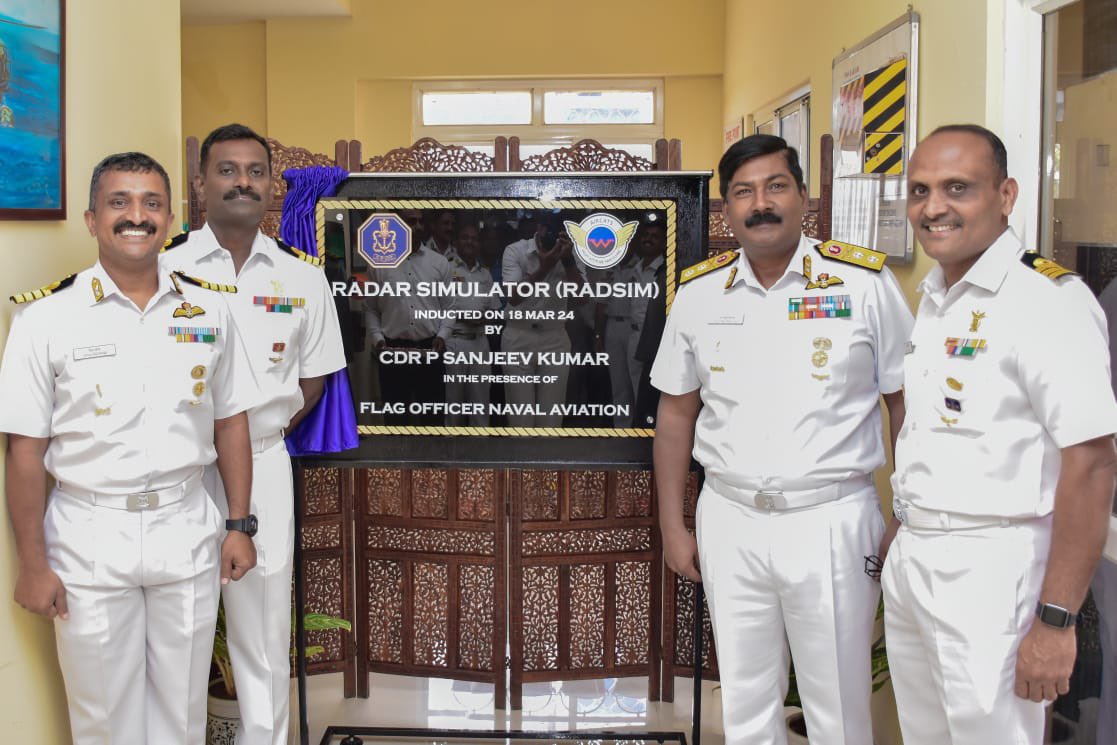
The Indian Navy’s aviation arm received a significant boost on March 18, 2024, with the induction of the first-ever Naval Aviation Radar Simulator (RADSIM) at Air Combat Training School (AIRCATS), Goa. This momentous occasion, graced by Rear Admiral Ajay D Theophilus, Flag Officer Naval Aviation, marks a major step towards self-reliance and enhanced training for Indian Navy Air Traffic Controllers (ATCOs).
The RADSIM, indigenously developed by the Software Development Institute (SDI) of the Indian Air Force (IAF), is set to revolutionize ATCO training within the Navy. This sophisticated simulator will provide a realistic and controlled environment for trainees to hone their skills in air traffic management.
Continue readingSOURCE: AFI
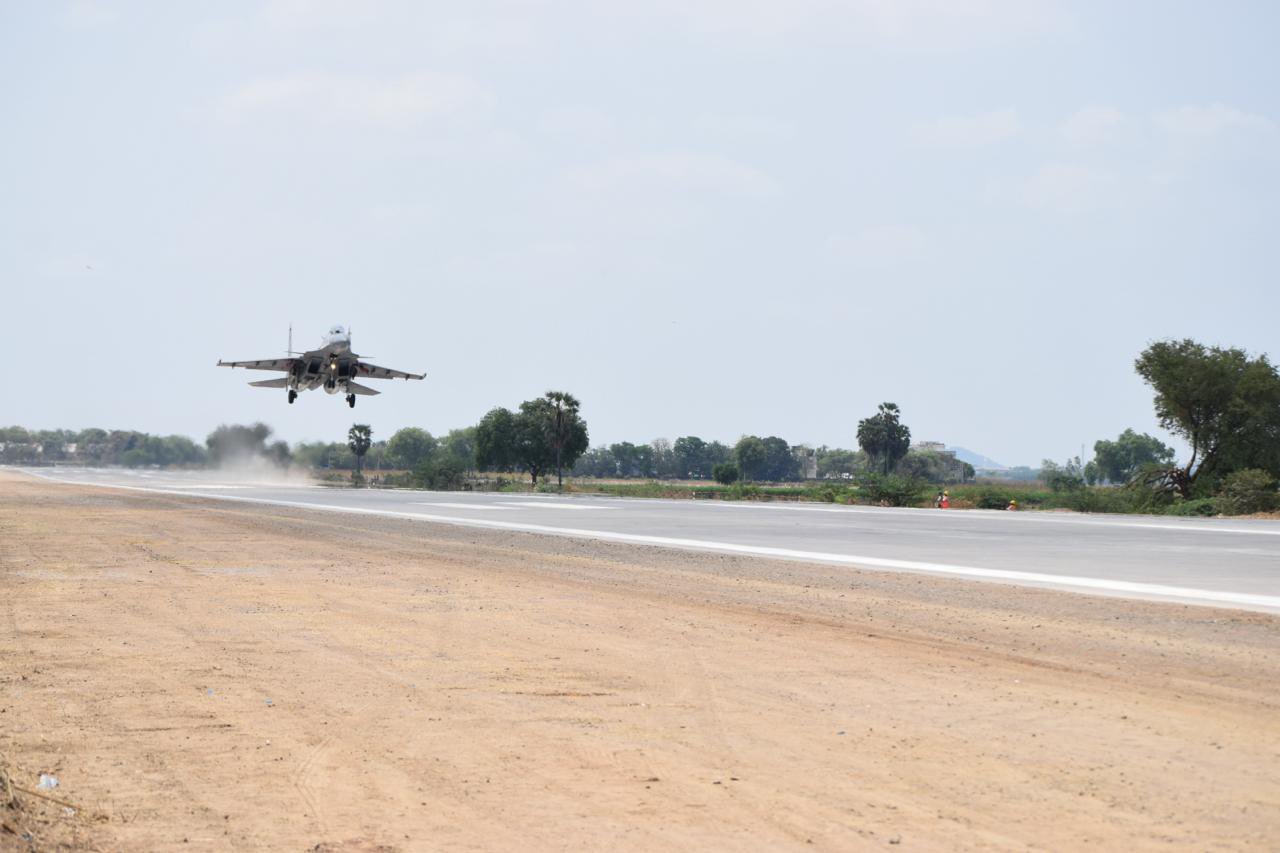
The Indian Air Force (IAF) recently conducted a successful activation of an Emergency Landing Facility (ELF) located on National Highway-16 in Andhra Pradesh. This activation marks a significant step towards enhancing the IAF’s operational flexibility and disaster response capabilities.
The exercise involved various IAF aircraft, showcasing the ELF’s suitability for a range of missions. Fighter jets like the Su-30 MKI and Hawk Mk 132 demonstrated the ability for swift deployment in times of need. Transport aircraft such as the An-32 and Dornier Do-228 successfully performed takeoffs and landings, highlighting the ELF’s capacity to support logistical operations and humanitarian assistance and disaster relief (HADR) missions in remote locations.
Continue readingSOURCE: RAUNAK KUNDE / NEWS BEAT / IDRW.ORG

Solar Industries India Limited (SOLARINDS) has unveiled the Bhargavastra Weapons System, a revolutionary defense technology designed to combat Unmanned Aerial Vehicles (UAVs) and drones. This innovative system was showcased on the Bharat-Shakti defence portal Youtube video, highlighting its potential to safeguard Indian airspace.
Developers of the Bhargavastra system describe it as a comprehensive configuration encompassing various critical components:
Continue readingSOURCE: RAUNAK KUNDE / NEWS BEAT / IDRW.ORG
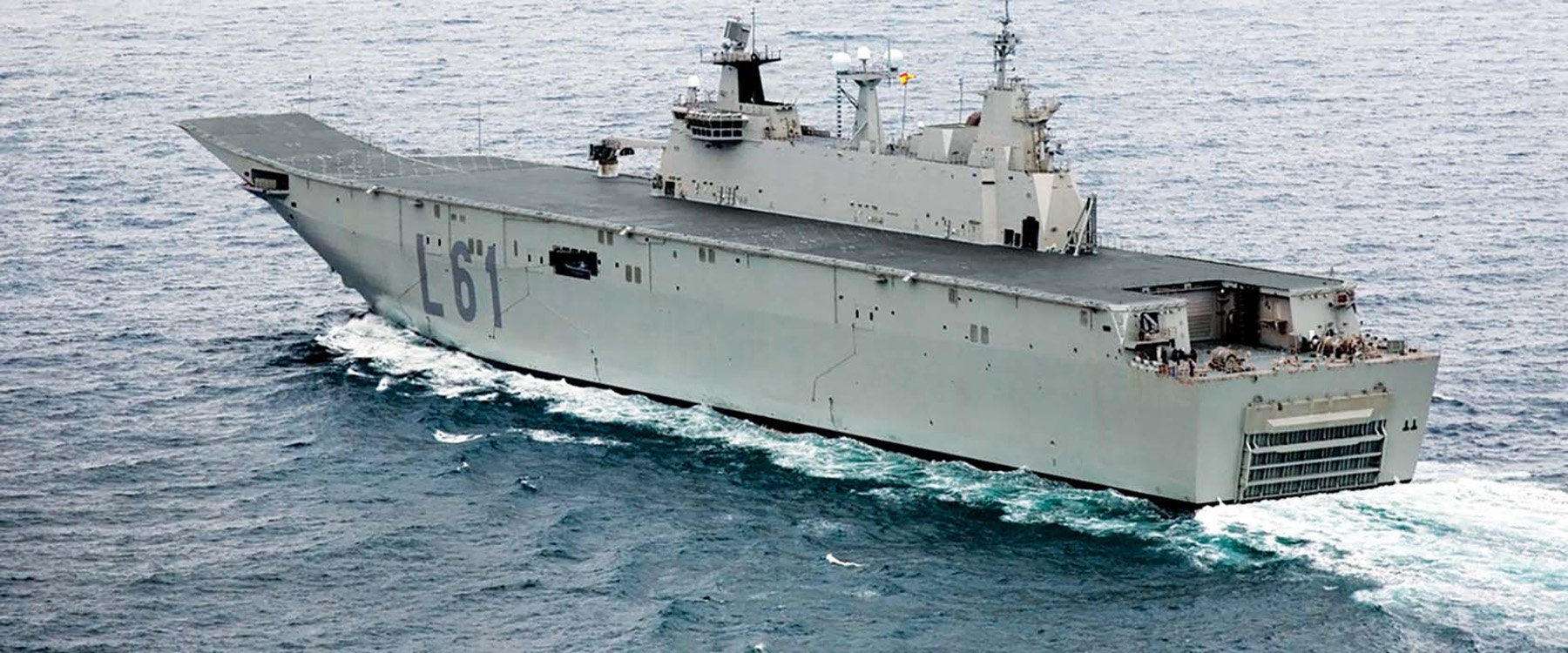
Navantia, a prominent Spanish state-owned shipyard, has set its sights on supplying the Indian Navy with its latest offering – the Juan Carlos I class multi-purpose amphibious assault ship. This news comes as the Indian Navy seeks to bolster its fleet with Landing Platform Docks (LPDs).
Amparo Valcarce, Spain’s Secretary of State for Defence, confirmed that Spain is not just offering the Juan Carlos I class LDPs, but also proposing their construction within India through a technology transfer (ToT) agreement. This “Make in India” approach would involve building a 26,000-ton LDP at a selected Indian shipyard, fostering domestic shipbuilding capabilities.
Continue readingSOURCE: RAUNAK KUNDE / NEWS BEAT / IDRW.ORG
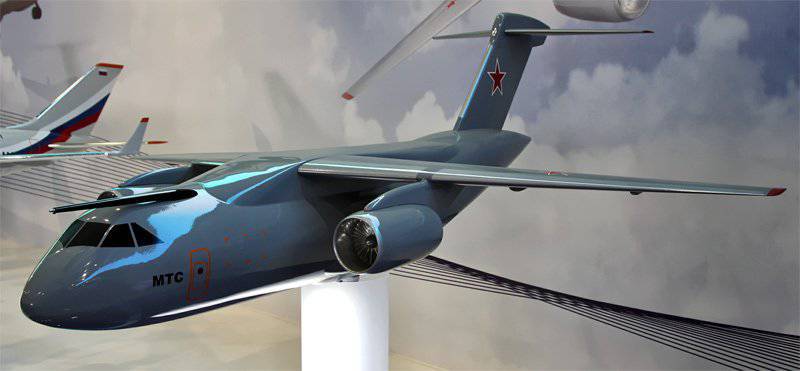
Fearing exclusion from the upcoming Medium Transport Aircraft (MTA) program, India’s state-owned aerospace giant Hindustan Aeronautics Limited (HAL) is lobbying for the development of a completely indigenous cargo transporter. This comes amidst the successful execution of the C-295 transport aircraft order by a private company, a first for India.
Sources familiar with the program inform idrw.org that HAL is advocating for the indigenous development of a new cargo aircraft. This approach aims to bolster India’s self-reliance in the defence sector and potentially create a long-term advantage in terms of maintenance and future upgrades.
Continue readingSOURCE: AFI

Hindustan Aeronautics Limited (HAL) is gearing up for a significant milestone in Indian aviation. The state-owned aerospace and defense company is on track to deliver the first indigenously developed LCA Tejas Mk-1A fighter jet to the Indian Air Force (IAF) by the end of March. The inaugural test flight for this upgraded aircraft could even take place within the next two days.
The Tejas Mk-1A represents a crucial step forward for the Indian Air Force’s modernization program. This variant boasts enhanced capabilities compared to the earlier Tejas Mk-1 version. Ordered in 2021 as part of a 73-fighter jet deal, the Mk-1A promises to bolster the IAF’s air combat prowess.
Continue readingSOURCE: AFI

The Heavy Industries Taxila (HIT) in Pakistan’s Taxila city buzzed with anticipation as Pakistan Army Chief General Syed Asim Munir graced the rollout ceremony of the Haider tank. This unveiling marked a significant moment in Pakistan’s defense capabilities, as the Haider tank is slated to become the nation’s Main Battle Tank. However, recent revelations from documents reviewed by ThePrint shed light on a different narrative, one that contrasts with the triumphant image the Pakistani military seeks to portray.
The genesis of the Haider tank can be traced back to Pakistan’s 2017 order of around 176 VT-4 tanks from China’s Norinco (North Industries Corporation). This procurement aimed to modernize Pakistan’s aging fleet of Main Battle Tanks, bolstering its defensive prowess. after it failed to develop Al-Khalid II MBT that was to be superior to the Al-Khalid I which was claimed to be based on the older T-9X tank from China. Al-Khalid I faced numerous issues and production was curtailed to just 250+ units, before it was shutdown.
Continue readingSOURCE: AFI
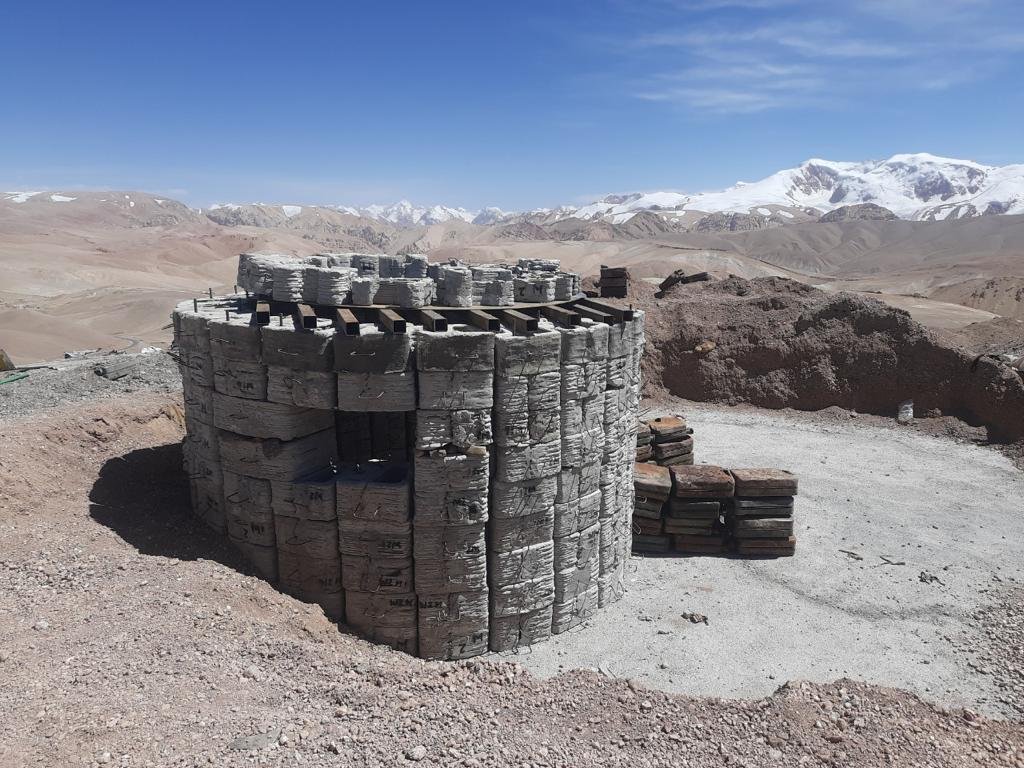
India is bolstering its border defenses in Arunachal Pradesh with the construction of next-generation bunkers at Sela Pass. These climate-controlled shelters, designed to withstand harsh Himalayan conditions, prioritize soldier comfort and combat effectiveness.
These bunkers seamlessly integrate with existing border infrastructure and leverage eco-friendly technologies. Solar and geothermal energy power air conditioning systems, ensuring a comfortable environment for troops even in extreme temperatures as low as -30°C. This not only improves soldier well-being but also promotes alertness and readiness.
Continue reading